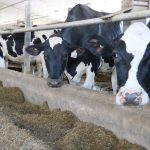
Report examines farming women’s safety needs
Safety of children, stress over general safety a common experience for women

Canadian Grain Commission appoints new chief

Carbon Alliance worries bill could add red tape, cost to farm lending
Private members bill proposes to add climate accountability strings to financial sector

Snow and rain fall across the Prairies
Topsoil should have sufficient moisture for planting in next few weeks says analyst

Ag leader Kim McConnell honoured by Calgary business leaders

Food and beverage sales to fall in 2024; processor margins to improve
Stabilizing or declining input prices working their way through the supply chain, FCC says

Organic group send petition to federal government
Feds asked to establish policies and programs to help organic producers meet consumer demand, create sustainable food systems

U.S. cattle vets rename bovine bird-flu
CDC asks state health authorities to have plans in place to test, treat farm workers; says risk to humans still low

Feds fund agriculture and food processing robotics projects

Avian influenza detected in person exposed to dairy cattle
Alberta Milk issues new biosecurity, human safety guidelines


